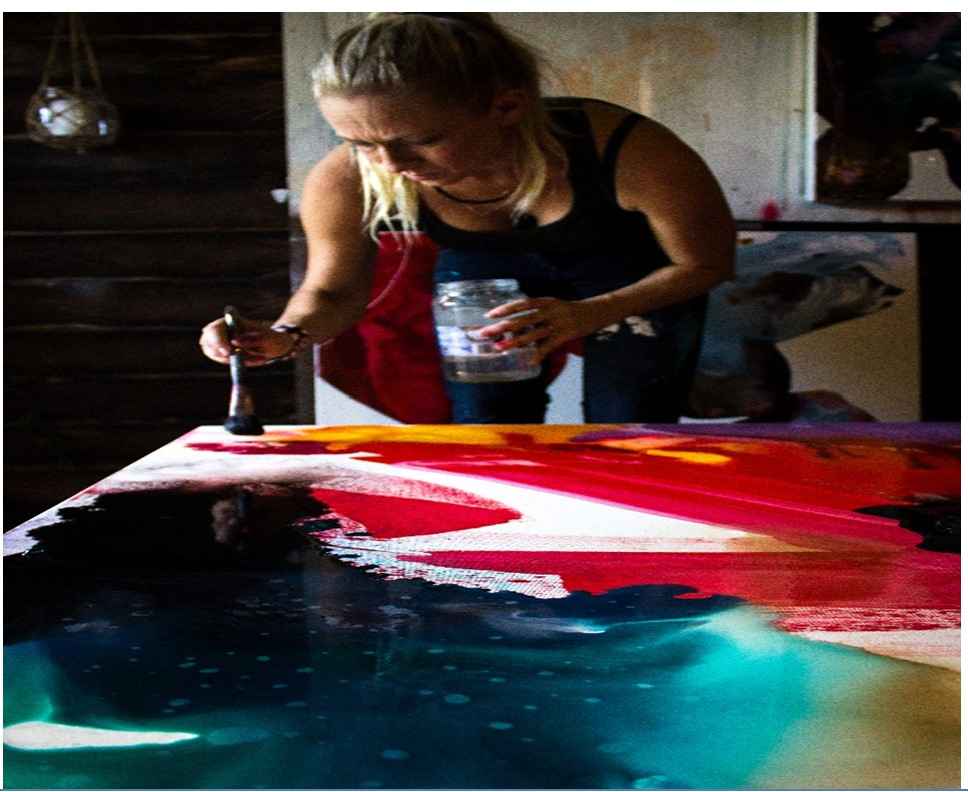‘Ma’ (間)
Just as different countries boast distinct cultures, languages, and cuisine, each country also promotes art differently and values particular elements in its artwork. They show extreme caution in the way their culture is reflected in the pieces they create and decide to showcase to the world. No one country has the same standards of evaluation when it comes to creating something, especially if that particular object or creation is in the form of art, which makes up a region’s soft culture.
Similar is the case with Japan; in Japanese culture and art, an artist’s interpretation of space is given special importance. The Japanese have a concept called, ‘Ma’, which reflects the notion of space or emptiness and it holds as much importance as the rest of the artwork. The empty space is supposed to encourage the viewer to perceive the space as part of the artwork rather than a section left unfilled. The notion of Ma holds importance not just when it comes to art but can also be found in most aspects of Japanese culture including, poetry, music, speech, and many other traditional facets of life.

The Japanese character for “Ma” (間) is a combination of the characters for “gate” above with “sun” below and, in literal terms, means the door that provides space as the sun shines through the empty doorway. Holding importance in many aspects of culture in Japan, ‘Ma’ refers to not just physical art and design but also extends to speech and mannerisms. Simply put, it’s considered a space full of possibilities or a space that allows for the development or existence of other things.
In its most fundamental sense, Ma promotes minimalism. In today’s day and age when consumerism has reached record-breaking heights and people are bent on filling space with more items and cluttering not just their schedules but lives as well with unnecessary things and activities, Ma promotes harmony, by giving us the room, time to think, and putting an order in chaos.
Traces of Ma can be seen in the works of many artists, designers, and photographers hailing from Japan as well as those living in different parts of the world; from the black and white photography of Hiroshi Sugimoto, the sublime architecture of Tadao Ando to Amica Aindow’s abstract pieces, many artists around the globe have incorporated its teachings in their work.
Hailing from Queensland, Australia, Aindow has been practicing and utilizing the concept of “Ma” (間) since 2016, to bridge the space between chaos and calm in her creations. Being an abstract artist known for painting with spontaneity and intuition, Aindow’s work has been featured in the Australian TV series, The Block and Grand Designs in 2018 and 2019, respectively.
She uses art as a medium to bring calm to the otherwise chaotic world and has exhibited her work independently and in group exhibitions in various art galleries namely Michael Reid Murrurundi; Metropolis Gallery, Geelong, Victoria with her current gallery work available in Soho Gallery Sydney, in Woollahra and Mosman Art Gallery, Norwood Adelaide, and Art lovers Australia’s Gold Coast Gallery.
Being a practitioner of Ma not just when it comes to art but also in her own life, Aindow values free time and space and believes it to be a crucial aspect of her creative process. Aindow’s artwork has been seen in different public collections including The Star, Crown Towers, The Block Elsternwick, The Block, and St John of God Berwick Hospital.
Being featured in different magazines such as Art Edit + Interior Design, Australian Country Magazine, Home Design Magazine, and The Gympie Times and interviewed on multiple podcasts including Corey Huff, Castelijn, and Laura Horn, and blog posts such as “Art Loves Australia,” “Cultural Flannery,” and “Crowdlink,” Aindow’s work has been praised and showcased extensively for her distinct style and harmonious art pieces. Aindow’s work also led her to the finals of the Contemporary Arts Awards Queensland and Art Lovers Australia Prize in 2018 and 2019 respectively.
The concept of Ma entails a lot more than just leaving empty spaces on a canvas but not every artist is able to fathom the layered nature of the concept which makes implementing it quite the challenge for many. However, Aindow, who has worked day and night to perfect her craft, understands its true meaning and tries to maintain its teachings beyond the canvas to live a harmonious life.


